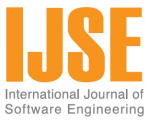Special Issue on Software Optimization and Security
This special issue of the International Journal of Software Engineering (IJSE) presents state of the art research on current practices in Software Engineering (SE). The issue is motivated by the guiding theme current practices in Software Optimization and Security. The issue presents a collection of invited papers presented by prominent researchers and professionals in the Software Engineering Track of the 2009 International Conference on Information Technology: New Generation (ITNG). These papers were peer reviewed by the track reviewers and the Track Chairs. Extended versions of selected papers were invited for this issue and blind-reviewed by experts in the field.
The quality of the underlying software engineering processes and methods is essential for the success of software development. The ITNG SE Track provided researchers and practitioners a forum to present and discuss their ideas and experiences in current SE practices. The track received a wide range of research papers that address current practices in SE including surveys of methods and techniques, experience reports in application development, and reports on tool development. The presented work aimed to improve SE processes, methods, technologies, and development paradigms, and it covered different research areas in the SE field.
The goal of this issue is to present current research in the area of software optimization and security. The quality and relevance to current issues and challenges in software development make selected papers of interest to SE researchers and practitioners. Through their work, the authors have demonstrated valuable contributions to SE research and practices with emphasis on the development of tools to improve practices in two specific areas: compilation and translation (specifically, agent-oriented source-level debugging, byte code-level cross compilation, and checking design constraints at run-time), and application security (specifically, component-based implementation for network security, security risk assessment in web applications, and software watermarking application). The papers discussed tools and methods to enhance these areas of software development.
We would like to extend our sincere appreciation to the reviewers who contributed to the review process in a timely manner given the tied schedule we had for this issue. The quality of their reviews and feedback are invaluable. We also thank the authors for accepting our invitation and taking the time and effort to revise and prepare their submissions for this issue. We also would like to extend our gratitude to IJSE Editor-in-Chief and the Editorial Office staff for giving us the opportunity to compile this special issue. Their encouragement and support are invaluable.
